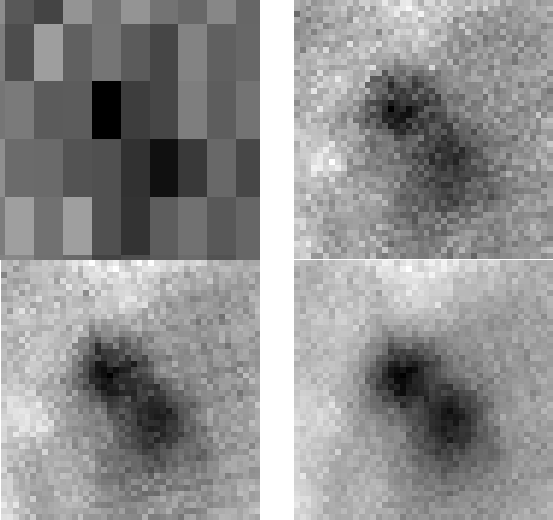



Next: 7.5 Angular Resolution and
Up: 7. A Case Study:
Previous: 7.3 Angular Resolution of
Contents
The number of observations stacked into a flux map, or number of scans for
short, is clearly a critical factor for the quality of the resulting flux map.
The improvement of angular resolution due to the increase in the number of
scans is illustrated in Figure 7.4, showing the same
part of the flux maps as in Figure 7.3 as it is seen
in a single observation and as it is reconstructed from 10, 20 and 50 simulated
observations.
Figure 7.4:
Number of scans and angular resolution of GAIA BBP flux maps.
The four images show the same sky region as in
Figure 7.3.
The upper left image shows a single observation obtained with  pixels/sample, whereas the upper right, lower left and lower right
images show a flux map reconstructed from 10, 20 and 50 simulated observations,
respectively, with the same sample size.
The side of each image is about 2 arcsec.
pixels/sample, whereas the upper right, lower left and lower right
images show a flux map reconstructed from 10, 20 and 50 simulated observations,
respectively, with the same sample size.
The side of each image is about 2 arcsec.
 |
Even if the two HII regions are better resolved in the 50-scan flux map,
on the whole, these images show that, at least as far as bright structures are
concerned, the highest resolution allowed by GAIA PSF could be achieved with a
number of scans substantially smaller than the 50 presently assumed.
On the other hand, the decrease in the number of scans would obviously have a
stronger impact on fainter features.




Next: 7.5 Angular Resolution and
Up: 7. A Case Study:
Previous: 7.3 Angular Resolution of
Contents
Mattia Vaccari
2000-12-05

